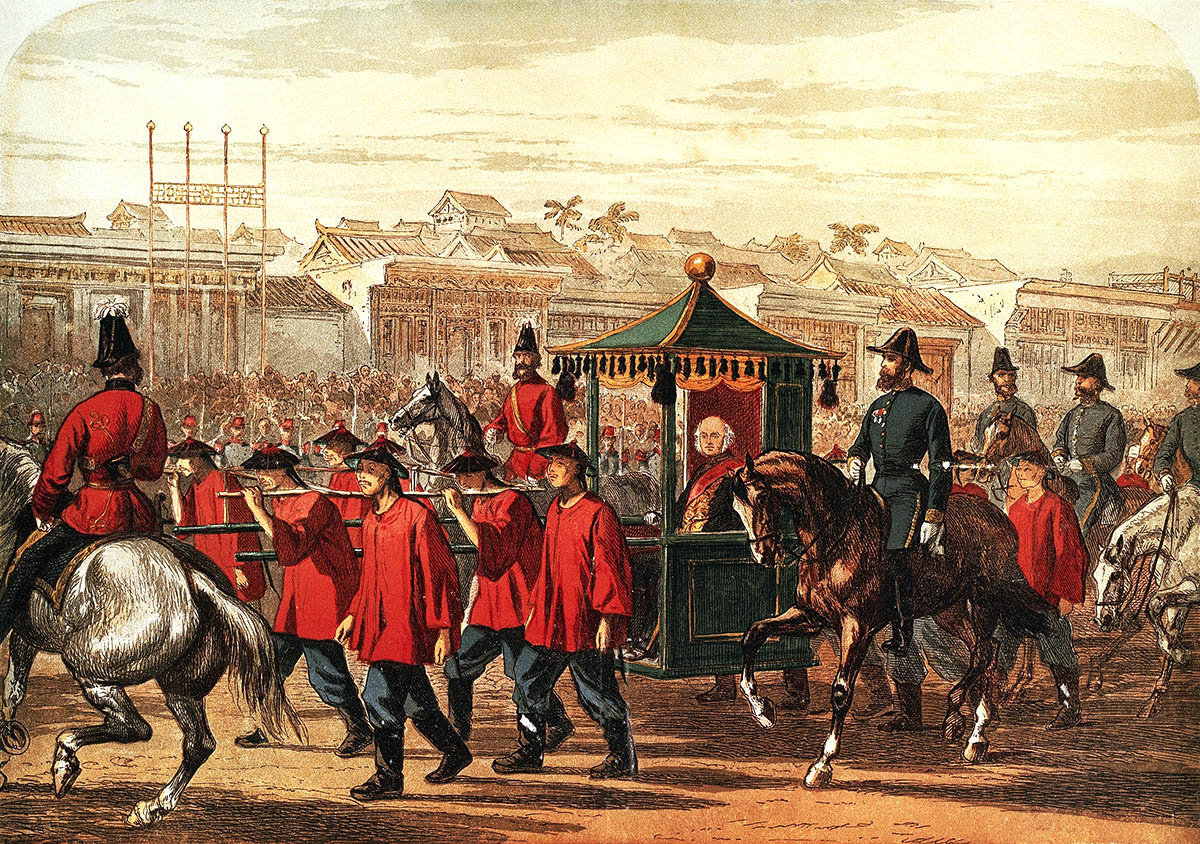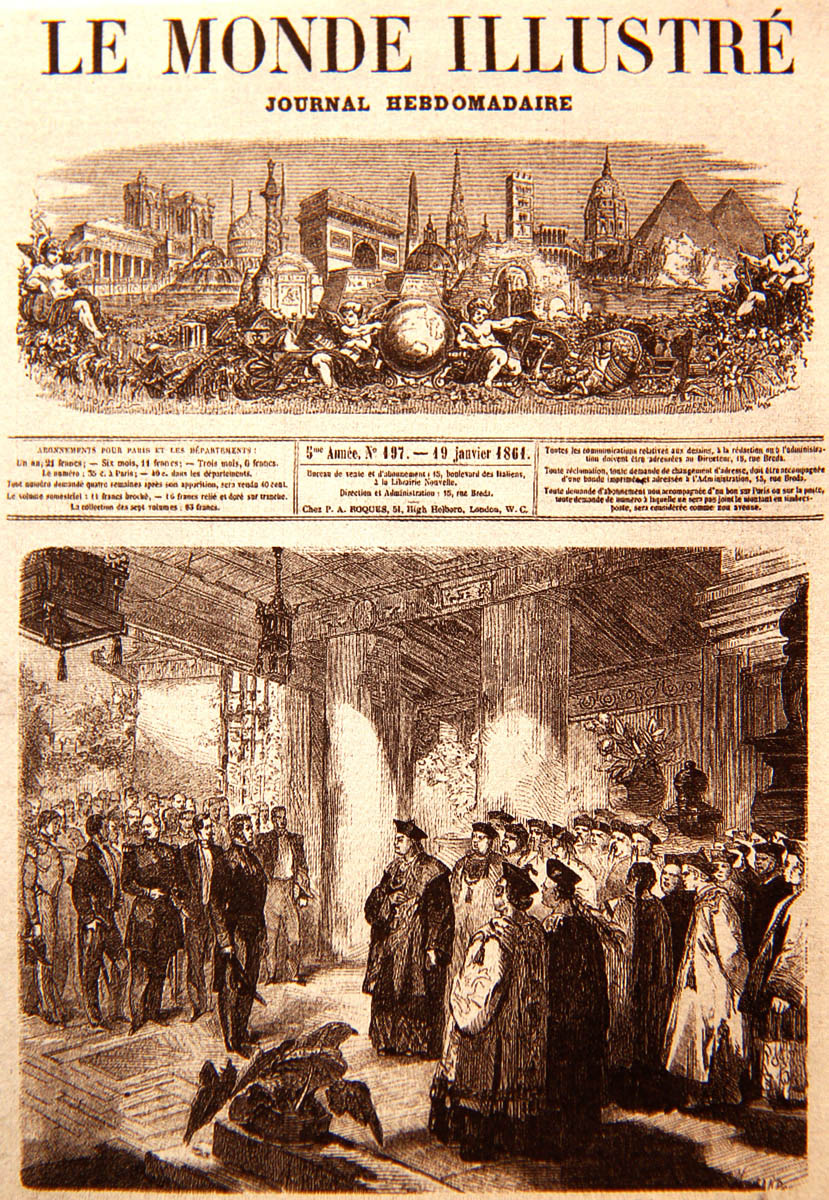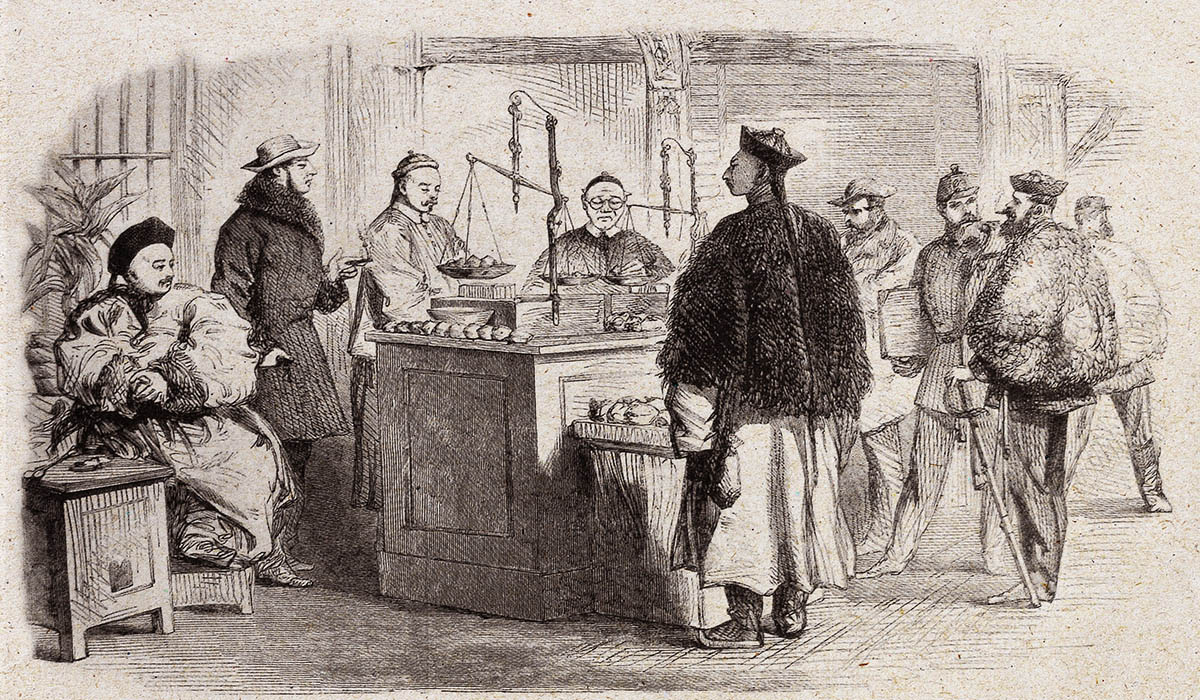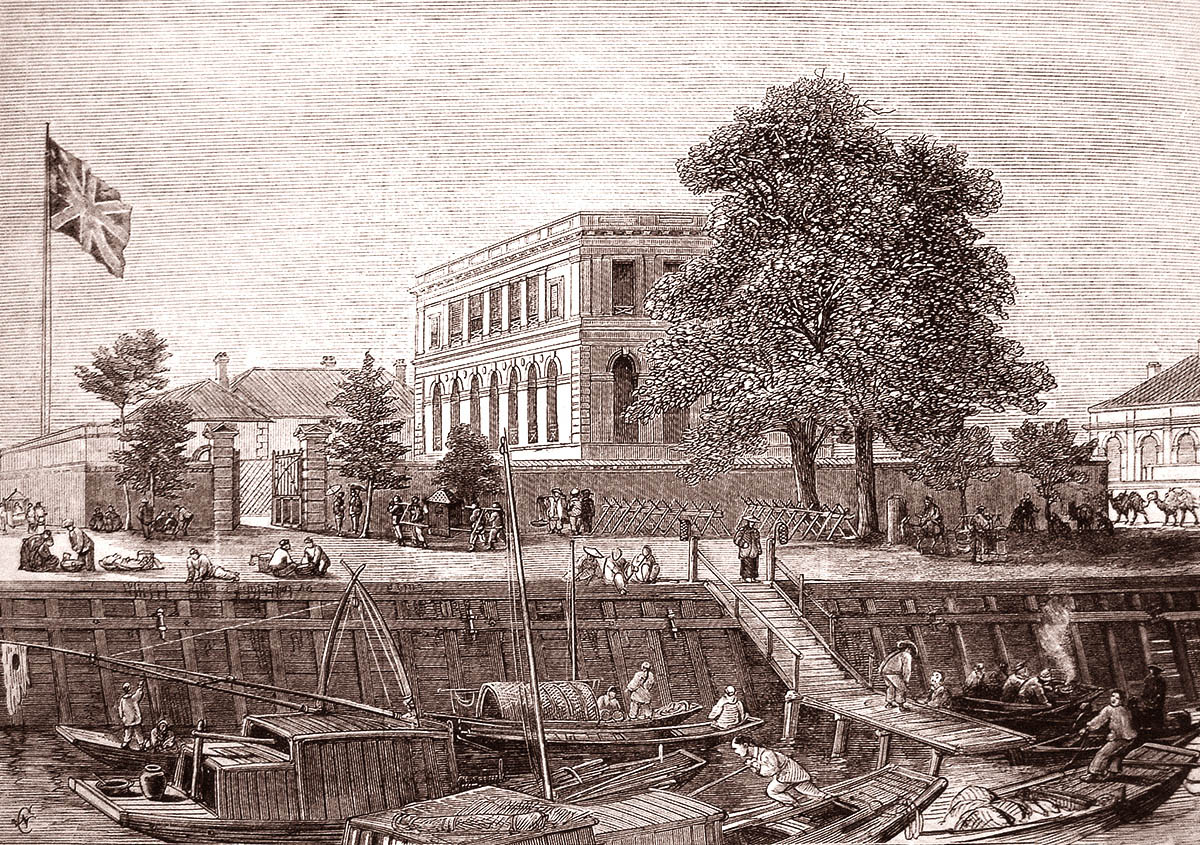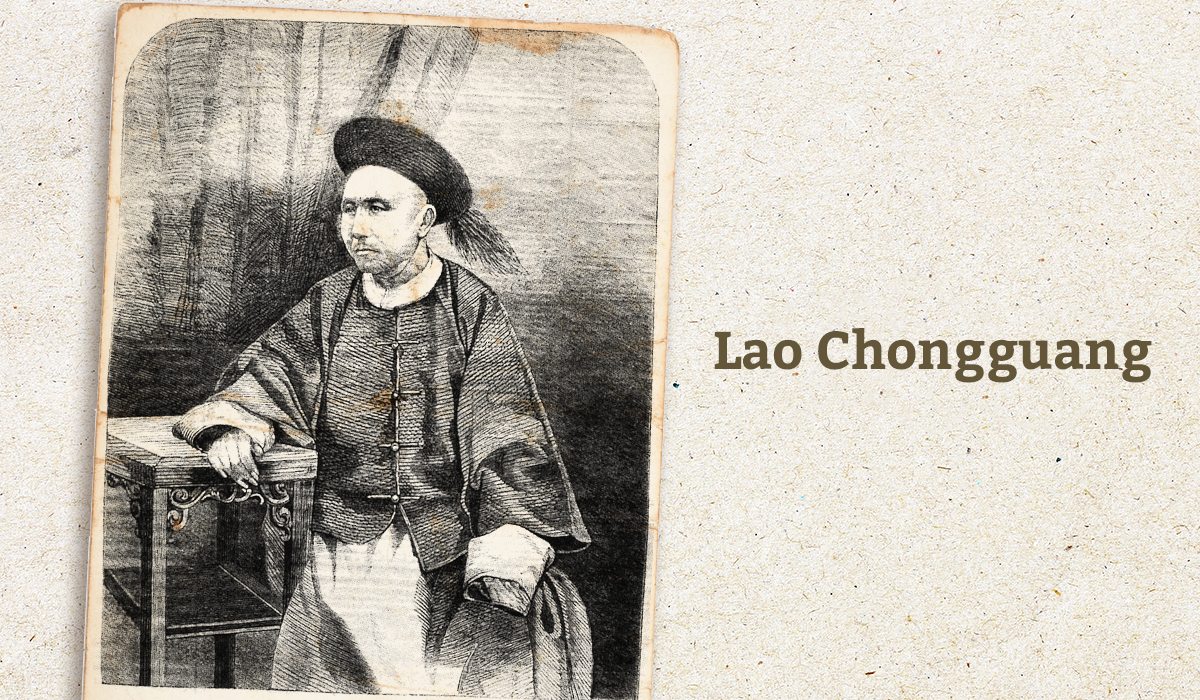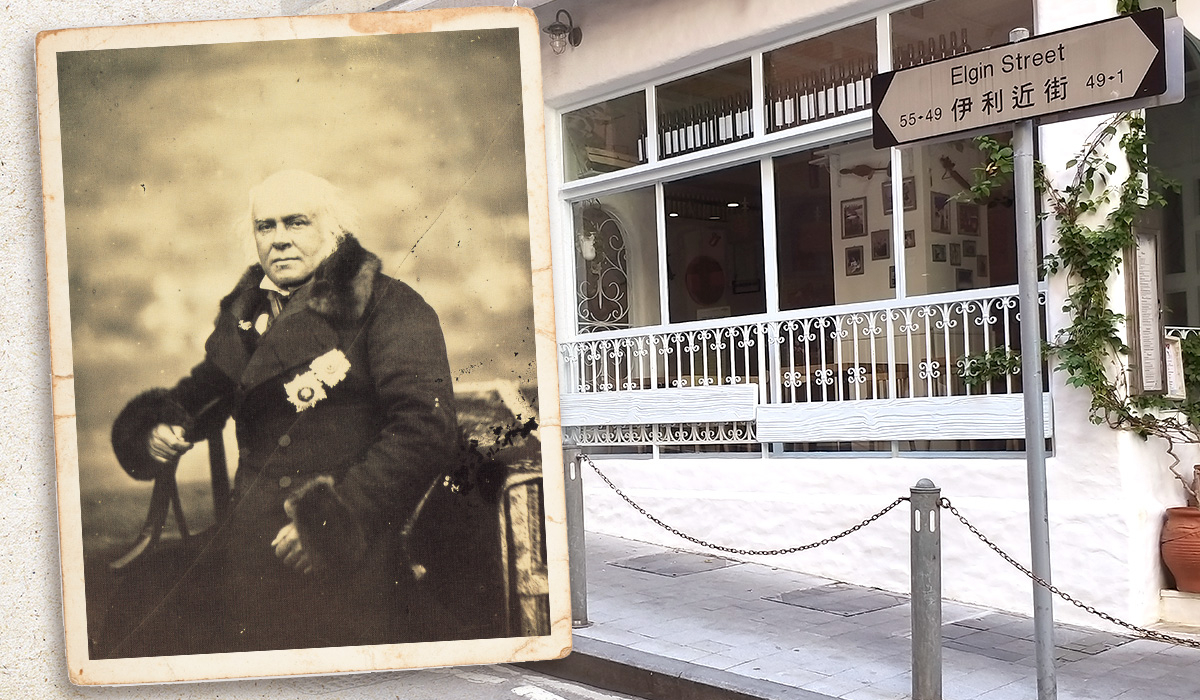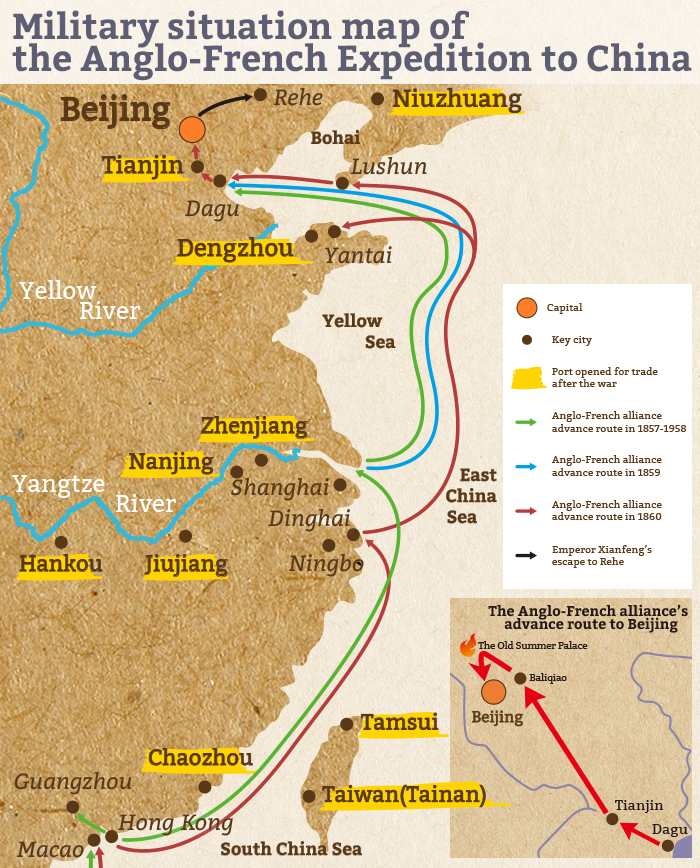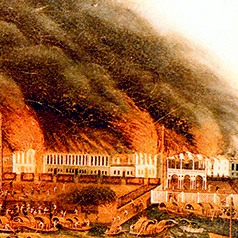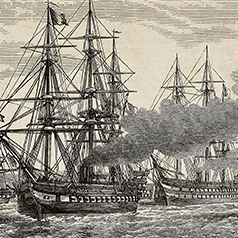With Beijing (北京,Peking) captured, China had no choice but to sign treaties with Britain and France. On 24 and 25 October 1860, Yixin (奕訢), also known as Prince Gong (恭親王) of the Qing Empire, exchanged ratifications of the Treaties of Tientsin (《天津條約》, Treaties of Tianjin) with Britain and France respectively, and signed separate “supplementary treaties”, also called the Conventions of Peking (《北京條約》) with the two countries. This marked the end of the war, and the Anglo-French alliance withdrew from Beijing. The major terms of the Sino-British and Sino-French Conventions of Peking are as follows:
(1) Affirmation of the previous treaty’s validity: the provisions of the Treaties of Tientsin, save for those modified by the conventions, shall come into operation;
(2) Increased war indemnities: reparations to be paid to Britain and France were increased to eight million taels (兩) of silver for each party;
(3) Opening of Tianjin as a treaty port: Tianjin shall be opened as an additional port for foreign trade;
(4) Emigration of Chinese workers: Chinese people shall be permitted to enter contract-based engagements with foreigners and work overseas;
(5) Property acquisition by missionaries: missionaries of France and other nations shall be permitted to lease or purchase land in all provinces and construct buildings on that land, as they please;
(6) Ceding of Kowloon: the southern part of the Kowloon Peninsula shall be ceded to Britain.
Not long after the start of the Anglo-French alliance invasion, the British forces expanded their control beyond Hong Kong Island to Kowloon. On 21 March 1860, under British coercion, a lease over the “portion of the Township of Cowloon (sic), in the province of Kwang-Tung (sic)” meaning the southern part of the Kowloon Peninsula (the area lying south of present Boundary Street﹝界限街﹞) was “granted in perpetuity” to Britain by Lao Chongguang (勞崇光), the Viceroy of Liang Guang (兩廣總督). The Sino-British Convention of Peking stipulated that “with a view to the maintenance of law and order in and about the harbour of Hongkong (sic) His Imperial Majesty the Emperor of China agrees to cede to Her Majesty the Queen of Great Britain and Ireland, and to Her Heirs and Successors, to have and hold as a dependency of Her Britannic Majesty’s colony of Hongkong (sic), that portion of the Township of Cowloon (sic)...” On 19 January 1861, sovereignty over the southern part of the Kowloon Peninsula was officially ceded by the Qing government to Britain.
|
|
What was the impact of the Sino-British Convention of Peking on Hong Kong? |
|
|
See answer below. |
With total military victory secured, Lord Elgin, the British Plenipotentiary, made his way to the signing of the treaty in a sedan carried by Chinese coolies with all the pomp and ceremony of the victorious on 24 October 1860.
An illustration of the Qing Plenipotentiary Yixin (Prince Gong) receiving the British and French plenipotentiaries at the Hall of Ceremonies and signing the Conventions of Peking in the French newspaper Le Monde Illustré. As the Qing government did not have a department dedicated to foreign affairs, the Board of Rites (禮部) was responsible for such matters until the later establishment of the Office for the General Management of Affairs Concerning the Various Countries (總理各國事務衙門), which also called the Zongli Yamen (總理衙門).
Prince Gong, the Qing Plenipotentiary, signed separate Conventions of Peking with British and French representatives on 24 and 25 October 1860 respectively. Pictured is the signing ceremony.
In 1861, China’s war reparations, paid in silver ingots, were weighed under the watchful eyes of British and French personnel. Under the Conventions of Peking, war reparations to be paid to Britain and France were increased to eight million taels of silver for each party.
Under the Conventions of Peking, Tianjin was opened for foreign trade as a new treaty port. This led to an increase in the number of foreign merchants and diplomatic envoys visiting Tianjin. Pictured is a wharf on Baihe (白河), Tianjin. The building overlooking it on the shore is the British embassy.
Congregation of British warships off the Kowloon coast in March 1860. Having claimed Hong Kong as its own following the Opium War, Britain shifted its gaze to the Kowloon Peninsula.
Sometime before the signing of the Convention of Peking, Britain had forced the then Viceroy of Liang Guang (兩廣總督) Lao Chongguang to grant them a lease “in perpetuity” over the “portion of the Township of Cowloon (sic) in the province of Kwang-Tung (sic)” meaning the southern part of the Kowloon Peninsula.
The line of demarcation between British and Chinese territories was labelled “proposed boundary” on the map accompanying the 1860 Sino-British Convention of Peking. It is the origin of the name of the present Boundary Street. Article six of the Sino-British Convention of Peking ceded to Britain the portion of the Kowloon Peninsula south of Boundary Street, along with Stonecutters Island.
James Bruce, 8th Earl of Elgin, helped secure military victory and enormous treaty deals for Britain in the Anglo-French Expedition to China. Elgin Street in Central, Hong Kong was named after him.
Military situation map of the Anglo-French Expedition to China
|
|
What was the impact of the Sino-British Convention of Peking on Hong Kong? |
|
|
Hong Kong Island alone was ceded to Britain in the 1842 Sino-British Treaty of Nanking (《南京條約》, Treaty of Nanjing). The British authorities in Hong Kong felt that the island’s limited size hindered its development and were eager to expand their territory northward. The 1860 Sino-British Convention of Peking provided the basis for their annexation of southern Kowloon, an area that included regions south of the present Boundary Street and Tsim Sha Tsui as well as Stonecutters Island. This allowed the British to further expand their colonial territory in Hong Kong. |
Source of most photos used in this feature piece: Fotoe





